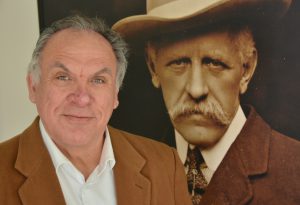
Dialogue is a path for the brave – as we must dare to listen to the uncomfortable. In order to overcome crises, we must address distrust, writes Alfredo Zamudio, Director of the Nansen Center for Peace and Dialogue.
Three significant forces in a crisis
In any situation of crisis in which a peaceful transformation is sought, there are three significant forces: those who know what is happening, those who can do something about it, and those who decide if it should be done. When there is great distrust, these forces neither communicate nor collaborate easily. Distrust is part of the scenarios that provoke crises.
Dialogue is not negotiation
In order to overcome crises, one must address distrust. Some people get annoyed at the mention of dialogue, as they believe it is the same as negotiation or mediation. While negotiation and mediation place the priority on results, dialogue is based on the process and revealing the difficulties (which can be many) and the solutions (which can be few).
A path for the brave
The path of dialogue is for the brave, because one has to dare to listen to the uncomfortable and open oneself up to the possibility of not knowing the full version of what the other thinks or has experienced in relation to the situation that divides us. When there is deep pain and there are stories that go unheard, distrust can be profound, and that is not easy to change. Active listening and humility are essential elements for creating a safe environment for those difficult conversations.
Separate facts, needs and emotions
Dialogue does not mean accepting that which is unjust.
Talking to one’s opponent is not the same as the claudication of ideals or rights. The peaceful transformation of conflict means talking about facts, needs and emotions, provided that we view ourselves as equals with the same right to live in those shared spaces.
Dialogue serves to understand
Dialogue is a form of communication that is focused on understanding «the other» rather than trying to persuade or convince that person that you are right. Dialogue is not about accepting the unacceptable, justifying crimes, or forgetting what happened. Rather it serves to understand the other’s point of view and be able to say to that person everything that needs to be said. Dialogue is an epic journey, one in which we can build a shared history and recover the trust we so dearly need.
Find the lowest place on the fence
Dialogue is an adaptive process, the success of which depends on the quality of the conversations and the ability to listen. Those who undertake a process of dialogue are embarking on a journey into a «terra incognita» – an unknown land. And just as we go to places we’ve never been to before, it is not just about reaching the destination, for the journey itself may teach us things we never knew. When there is no trust and it is necessary to build together, dialogue can help us find the lowest place on the fence (*), allowing us to cross to the other side without failing on our first attempt. The social fabric of society can be rebuilt through these spaces for coming together and engaging in dialogue.
Coordinates for the future
If we fail to build something together at the first attempt, at least we learned something from the effort that we didn’t already know. And we can always try again. History shows us that reconciliation of people never is a straight path and may well be a difficult journey. Dialogue may provide us with the coordinates to navigate through these difficulties.
We can build a shared future
If we have a better map to guide us through the challenges of today and tomorrow, we will know exactly where to build bridges, where to be more careful and how to safely reach our destination. That is the shared future that we need and which we certainly have the skills to build.
Written by Alfredo Zamudio, Nansen Center for Peace and Dialogue. Published August 10th 2020
Footnote: *Inge Eidsvåg: Understanding the other